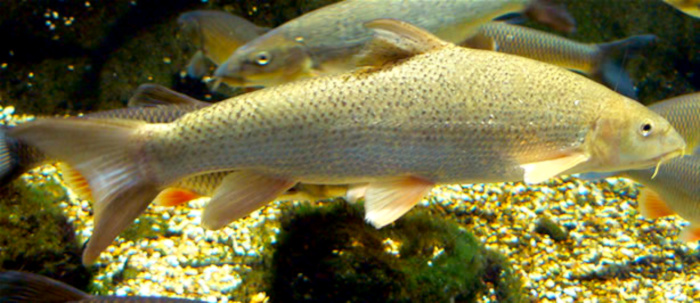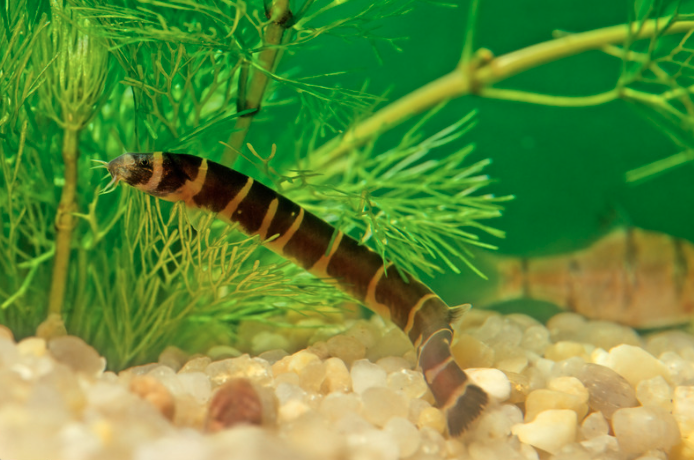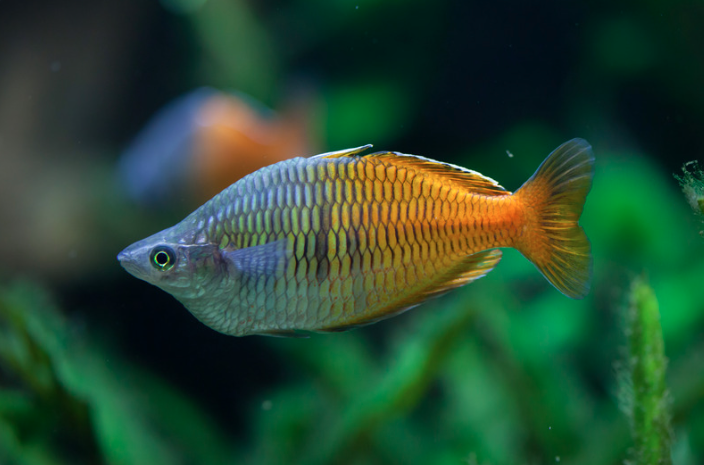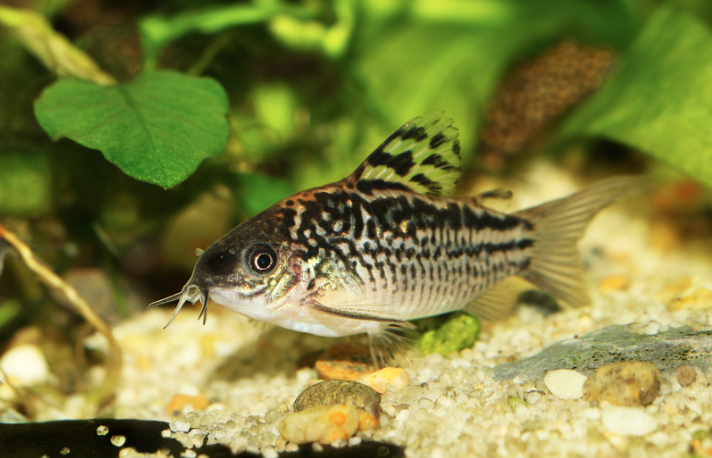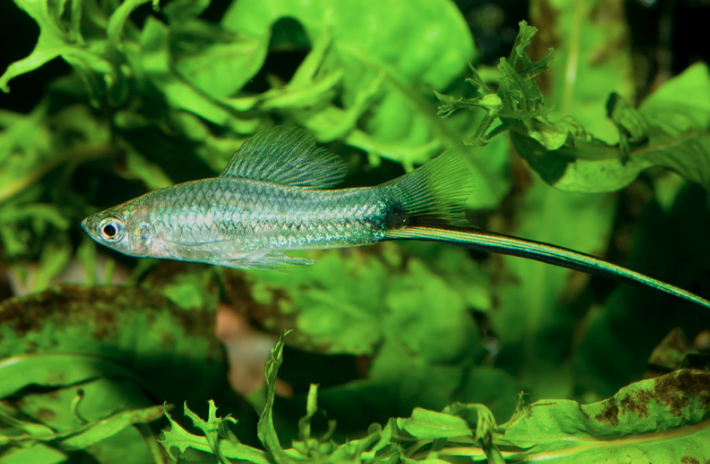Top Easiest Fish to Take Care of: Stocking your fish tank with the appropriate fish is quite a challenge. That is why today we are going to see the fish that need less care for your aquarium.
Sure, you want a colourful and lively tank, but keeping the fish healthy and in good condition represents a challenge for its owner.
Top Easiest Fish to Take Care
Later, we will present a list of easy to care for and maintain fish.
It is essential that you know how to combine the fish in your aquarium since the behaviour of the fish varies according to their species: there are peaceful, sociable or aggressive.
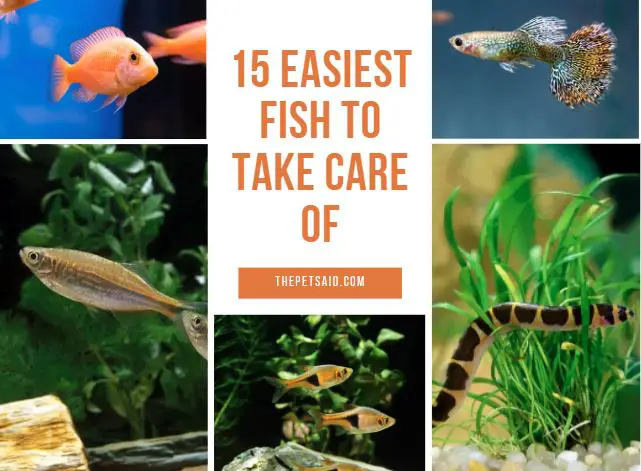
It is important to check if the species are compatible with each other, so before purchasing a specimen, you should ask the pet store for these details.
In the same way, the pH of the water is important since each fish needs a certain pH level to live in a healthy way.
You should check that your aquarium has a pH between 5.5 and 8.
Another issue is the water temperature between 20-23º C, which is the right temperature for a fish from the list you will see below.
What are the easiest fish to take care of?
The fish that we are going to show you can live, adapt to various aquatic environments, feed easily and are resistant to most fish-specific diseases.
The aquarium hobby is the hobby of raising fish in an aquarium, but there are fish that are easier to care for than others. By “easy,” we mean that they can live, adapt to various aquatic environments, can be fed and are resistant to most fish diseases.
Low Maintenance Fish That Require Minimal Care
Today, from ThePetAid, we show you the easiest fish to care for in an aquarium according to Our Animal Expert :
1. Aulonocara
These easiest tropical fish to take care of are well known for their striking colours and low maintenance.
These fish do not grow beyond 14 cm, so we recommend you buy a 120-150 litre fish tank.
As this fish is omnivorous, it does not have many problems with its proper feeding: you can feed it with dry scales, frozen food and scales.
Keep in mind that each subspecies of Aulonocara has its own particularity regarding the pH and temperature of the water.
However, these fish will be able to live in a pH between 5.5 to 8 and at a temperature between 20-23ºC.
2. Barbel Fish
Its origin is Asian, and currently, they can be found anywhere in the world, except in South America. Most fish of this species are omnivores and are generally easy to feed, care for and maintain.
3. Anabantoidei
These fish are the easiest fish to take care of, because they have a specialized organ that allows them to take in oxygen directly from the air itself.
Unfortunately, these fish are usually very territorial with other members of their species, although as a counterpart, they ignore fish of other species.
For this reason, it is advisable to have a fish of this species in your fish tank or aquarium.
These fish can subsist without problems in waters between 15º and 30ºC.
4. Danios / Zebrafish
They live in the area of East India and Bangladesh and have a tireless vitality. They can measure up to 6 cm in length and are normally olive green or golden, with brown shades and bright blue stripes that run through the body. They are not conflictive fish but they are great jumpers, so it is advisable to close the aquarium to avoid accidents.
Their ideal temperature is between 18 and 26º C. In addition, they are very resistant and do not need special care, so they are ideal for beginners.
5. Kuhli loach
These brightly coloured fish can grow to about 10 cm long and require a pH of 6 to 6.5.
Like all omnivorous fish, it can live on dry food or frozen food.
This fish is highly adaptable. The only special care it requires is fine gravel because it will try to bury itself in it; it will suffer from stress if it can’t.
6. Rasboras
They live in Southeast Asia in the jungles of Borneo, Sumatra, Malaysia, Thailand and the island of Java. They are well known for being very resistant to disease, for their attractive colours and for their good sociability. Normally they only reach about 5 cm.
They like to live in small groups but are very active and easy to care for.
As a curious fact, the males eat their own young when they are still eggs. Even so, the females are always reproducing, and the ideal is to separate the couple in case you want to breed more.
7. Guppy
This fish is well known and widely recommended for those with little experience in keeping fish. It is one of the most famous and requires the least care.
The only special care it requires is the presence of plants and other decorative objects.
These fish, especially the females, rest around the plants. Otherwise, they may end up suffering from stress.
The temperature of the aquarium should be between 22 and 26º C, and its pH should be neutral.
8. Chinese Neon
they are found in the mountain streams of China, and they are famous for their dazzling bright and striking colours. They usually measure between 4 and 6 cm and are generally greenish-brown with a longitudinal white-yellow-pinkish line, a red tail, and yellow and red fins.
They are jumping fish, so it is best to have a covered tank. They need a temperature between 15 and 24º C and are ideal for keeping at home because they are beautiful, easy to care for, resistant, and unlikely to get sick.
9. Rainbowfish
It does not need any special care. These fish usually have attractive colours, and their maximum size does not exceed 12cm in length.
The only thing to keep in mind when caring for these fish is that the temperature should be between 22-26ºC, and it should have a neutral pH.
They come from the islands of Australia, New Guinea and Madagascar. These fish do not usually exceed 12 cm in length, have a double dorsal fin and are of various colours because their scales are reflective. Many of them seem to change their colour as a result of age, food or sexual activity.
They are peaceful, active and gregarious fish, so they need to live in groups of 6 or more to avoid stress. In addition, they do not require any special care, and they are very easy to breed and maintain.
10. Cory Catfish
The corydoras, they are oviparous fish of the family Callichthyidae, to which more than 140 species of catfish belong.
These are so-called because they have whiskers and often live at the bottom of the aquarium while looking for food. That’s why we know them as “garbage” fish.
These types of fish are generally small and measure between 5 and 6 cm. Corydoras are very resistant fish since they can survive in aquariums with little oxygen and come up to breathe directly to the surface through their intestine. In addition, they are also very resistant to diseases.
11. Cichlid
Cichlids are a very varied species of tropical fish, but we recommend them for their easy maintenance, easy diet and colour.
These tropical aquarium fish can survive in any habitat.
The only problem with these fish is their rapid reproduction since if we are not careful enough, the cichlids will end up dominating the aquarium.
It is enough to control the temperature of the water to inhibit ovulation.
12. Xiphophorus
Xiphos requires a fish tank of at least 70 litres and requires very intense lighting.
Leaving aside that, it is a fairly easy fish to care for, and you just need the pH of the water to be neutral, although it can survive without problems in waters of pH 8.
The temperature should be between 20º and 28º C. These fish do not usually exceed 15cm, with the female being the largest.
The Xiphos are very peaceful fish, although the males can be territorial occasionally and more so if there are few females to share.
It is recommended to have at least 3 females for each male in the tank.
13. Tetra
These tropical fish are very colourful, and you can find them in hundreds of colours and combinations.
Rarely will these fish measure more than 5cm and do not require any special care.
You can keep them in a small fish tank (25-50 litres) with a few plants, and they will live peacefully.
It is only enough to monitor that the pH level of the water is around 5.5-6.5, and the temperature is between 24º-27º C.
14. Tateurndina
These fish can have very varied colours; being very difficult to find one of these with a single colour on its scales.
These fish do not require much special care, nor much space to live, although we recommend having at least 20 liters of water.
The temperature should be between 24-26ºC and have a neutral pH.
15. Golden Barb
These tropical fish are usually very territorial and can act violently against other species.
This species’ struggle intensifies if the environment is hostile.
These fish measure 6-7 cm, require a pH between 6 and 7.5 and a temperature between 10-20ºC.
Their only peculiarity is that they cannot live in groups of at least 7 individuals, since if so, the result will result in stress and aggressive behaviour.
It is also recommended to place plants with narrow and resistant leaves.
Carp eat these types of plants. This is a representative sample of tropical aquarium fish that require less care.
There are other species that fill this profile but have been omitted.
If you have doubts, consult a specialized store, and you will be able to find out about other fish that require very simple care.
Also, these stores will give you other suggestions for your special care.
Having a personal aquarium is having a piece of the sea in the comfort of your home.
The fish you acquire are living beings, and therefore, be it minimal or exhaustive care, they will require your attention.
Conclusion
Did you like this article? You may find this interesting about whether fish really bring bad luck.


